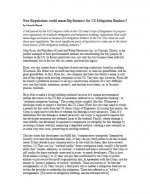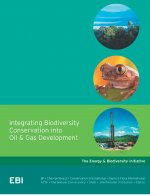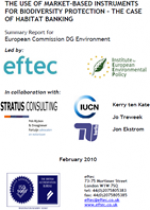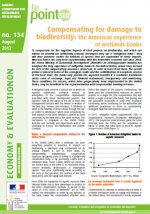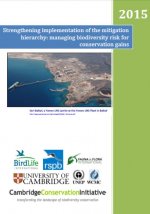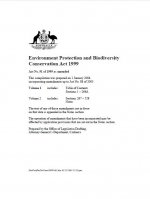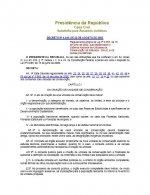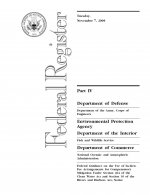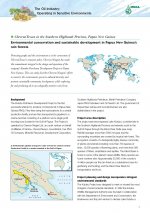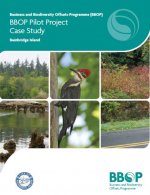New Regulations could mean Big Business for US Mitigation Bankers?
Ricardo BayonJohn Ryan, the President of Land and Water Resources Inc. in Chicago, Illinois, is the perfect example of how environmental markets are transforming the way people do business in the US. In Ryan’s particular case, not only has his business been radically transformed, but so has his life, his career, and even his legacy.
Integrating Biodiversity Conservation into Oil and Gas Development
The Energy and Biodiversity InstituteIncreasingly, areas of interest for oil and gas development are also being recognized and valued for their biodiversity resources. Biodiversity, the complex web of genes, species, ecosystems and ecological processes that sustain life on Earth, provides human society with food, medicines, natural resources, ecological services and spiritual and aesthetic benefits. Yet, this biodiversity is under […]
THE USE OF MARKET-BASED INSTRUMENTS FOR BIODIVERSITY PROTECTION THE CASE OF HABITAT BANKING
Summary Report for European Commission DG Environment
EXECUTIVE SUMMARY: This is the summary report of the consortium led by Economics For The Environment Consultancy Ltd (eftec) and the Institute for European Environmental Policy (IEEP) for the contract for European Commission Directorate-General Environment on The Use of Market-based Instrument for Biodiversity Protection the case of habitat banking (ENV.G.1/ETU/2008/0043).
Compensating for damage to biodiversity
the American experience of wetlands banks
Review of the US experience with wetlands banking
Strengthening implementation of the mitigation hierarchy
managing biodiversity risk for conservation gains
Cambridge Conservation InitiativeThe scale and pace of development is intensifying across the mining, oil & gas, agriculture, infrastructure, forestry and housing sectors. Such rapid and large scale expansion in commercial development threatens to irreversibly transform landscapes around the world, putting pressure on biodiversity and the people that depend on it for their livelihoods and well-being. Understanding the […]
Environment Protection and Biodiversity Conservation Act 1999: Act No. 91 of 1999 as Amended, Volume 1
Government of AustraliaThe objects of this Act are: to provide for the protection of the environment, especially those aspects of the environment that are matters of national environmental significance; and to promote ecologically sustainable development through the conservation and ecologically sustainable use of natural resources; and to promote the conservation of biodiversity; and to provide for the […]
Decreto No 4.340, 22 Agusto 2002
Government of BrazilArt. 2o O ato de criação de uma unidade de conservação deve indicar: a denominação, a categoria de manejo, os objetivos, os limites, a área da unidade e o órgão responsável por sua administração; a população tradicional beneficiária, no caso das Reservas Extrativistas e das Reservas de Desenvolvimento Sustentável; a população tradicional residente, quando couber, […]
Federal Guidance on the Use of In-Lieu-Fee Arrangements for Compensatory Mitigation Under Section 404 of the Clean Water Act and Section 10 of the Rivers and Harbors Act
Government of the United StatesThe Army Corps of Engineers (Corps), Environmental Protection Agency (EPA), Fish and Wildlife Service (FWS) and National Marine Fisheries Service (NMFS) are issuing final policy guidance regarding the use of in-lieu-fee arrangements for the purpose of providing compensation for adverse impacts to wetlands and other aquatic resources. Compensatory mitigation projects are designed to replace aquatic […]
ChevronTexaco in the Southern Highlands Province, Papua New Guinea: Environmental Conservation and Sustainable Development in Papua New Guinea’s Rain Forests
International Petroleum Industry Environmental Conservation AssociationProtecting people and the environment is at the cornerstone of ChevronTexacos corporate policy. Chevron Niugini has made this commitment integral to the design and operation of the companys Kutubu Petroleum Development Project in Papua New Guinea. This case study describes Chevron Niuginis efforts to conserve the environment, preserve cultural diversity and promote sustainable community development, […]
Bainbridge Biodiversity Offset Case Study – 2009
Case study of the BBOP pilot biodiversity offset work on Bainbridge Island, Washington, US. Published in 2009.


